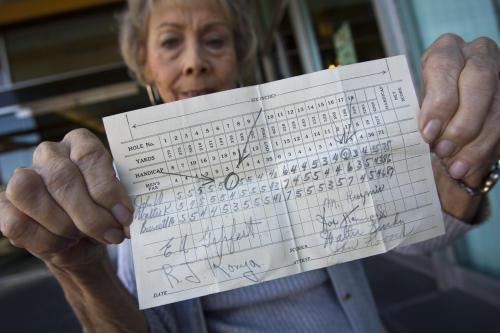Posted by jstevrtc on August 18th, 2010
One of the first things I did on this website upon debuting two years ago was live blog ESPN’s first 24-hour college hoops marathon from start to finish. You know how it is. You’re the new guy, you want to impress your co-bloggers, and all that. I volunteered for the job, thinking I’d earn the respect of my RTC-mates and perhaps bring a few new visitors to the site. I assumed the novelty of it (it wasn’t that novel) would, in the same way that circus-goers stroll by the exhibition of freaks, bring a few people by to check in on the weirdo who was staying up and live blogging the whole thing. I thought it turned out great, especially for a guy’s first time. I had been awake for 16 hours before it started, too, so there were a few palpitations and many hallucinations by the time it was over, but I was proud. And as I was doing it, I was convinced that the combination of my astute basketball observations with my razor-sharp pop culture references would make this site a household name and propel us into the very heart of the American consciousness. Which, as we all now know, is precisely what happened.
Last year I did it again, despite the wagging fingers of my internist and a couple of specialists. We had some technical difficulties when the internet connection at the RTC Southern Compound tendered its resignation, but with some help of friends who subbed for me while I changed location, we got it done and I was able to finish strong.

Oh sweet, delicious caffeine -- the Marathon blogger's best friend.
We’re still in secret discussions as to what we’re going to do this year to celebrate the national holiday that is the 24-hour hoops marathon. I might insult my cardiovascular and central nervous systems for a third year in a row, or we might have something better in store this year. But because I’ve done it twice and not yet needed a trip to the ER, I — erroneously, in all likelihood — consider myself the authority on the subject. To celebrate the release of this season’s Marathon schedule and the fact that it’s — *sigh* — only three short months away, here are my 24 favorite things about watching ESPN’s 24 Hour Hoops Marathon from beginning to end.
24. The fact that it’s actually about 26 hours of basketball, not 24. The last game starts at 11:30 PM ET, if it’s on time. Not only is it an “extra” game, but it’s a good time to summarize what you’ve seen during the day and pat yourself on the back. Bonus hoops? I’m not complaining, not even after 24 hours.
23. Seeing whether or not ESPNU’s Lowell Galindo will continue to go with the full Windsor knot in his tie. Others in the sports media have worn it. Only one man has perfected it. He’s made some appearances without it during the off-season, and stock markets all over the world plummeted each time.
22. The constant string of games is an instant reminder of those sweet days of Championship Week and the NCAA Tournament.
Read the rest of this entry »
| media matters
| Tagged: andy katz, baylor, bill raftery, bobby knight, butler, central michigan, duke, espn 24 hour hoops marathon, florida, fran fraschilla, fresno state, gerard anderson, jared sullinger, joe jackson, joshua harrison, kawhi leonard, kyrie irving, la salle, liberty, lowell galindo, mason plumlee, matthew dellavedova, memphis, michelle beadle, monmouth, northeastern, northern iowa, ohio state, omar samhan, paul george, perry jones, saint mary\'s, san diego state, seth curry, siena, st johns, steve lavin, tennessee, tobias harris, trey zeigler, wayne brady, will barton
Share this story



















































